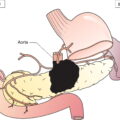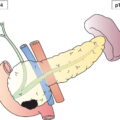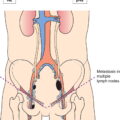The classification applies only to carcinomas and includes adenocarcinomas of the oesophagogastric/gastroesophageal junction. There should be histological confirmation of the disease and division of cases by topographic localization and histological type. A tumour the epicentre of which is within 2 cm of the oesophagogastric junction and also extends into the oesophagus is classified and staged using the oesophageal scheme. Cancers involving the oesophagogastric junction whose epicentre is within the proximal 2 cm of the cardia (Siewert types I/II) are to be staged as oesophageal cancers. The regional lymph nodes, irrespective of the site of the primary tumour, are those in the oesophageal drainage area, including coeliac axis nodes and paraesophageal nodes in the neck, but not the supraclavicular nodes. The regional lymph nodes, irrespective of the site of the primary tumour, are those in the oesophageal drainage area, including coeliac axis nodes and paraesophageal nodes in the neck, but not supraclavicular nodes. The pT and pN categories correspond to the T and N categories. Note pM0 and pMX are not valid categories.
OESOPHAGUS (ICD‐O‐3 C15)INCLUDING OESOPHAGOGASTRIC JUNCTION (ICD‐0‐3 C16.0)
Anatomical Subsites (Figs. 132, 133)
Regional Lymph Nodes
TNM Clinical Classification


Regional Lymph Nodes (Fig. 133)
TNM Clinical Classification
T – Primary Tumour
TX
Primary tumour cannot be assessed
T0
No evidence of primary tumour
Tis
Carcinoma in situ/high‐grade dysplasia
T1
Tumour invades lamina propria, muscularis mucosae or submucosa (Fig. 134)
T1aTumour invades lamina propria or muscularis mucosae
T1b Tumour invades submucosa
T2
Tumour invades muscularis propria (Fig. 134)
T3
Tumour invades adventitia (Fig. 135)
T4
Tumour invades adjacent structures (Fig. 136)
T4a Tumour invades pleura, pericardium, azygos vein, diaphragm or peritoneum
T4b Tumour invades other adjacent structures such as aorta, vertebral body or trachea (Fig. 137) 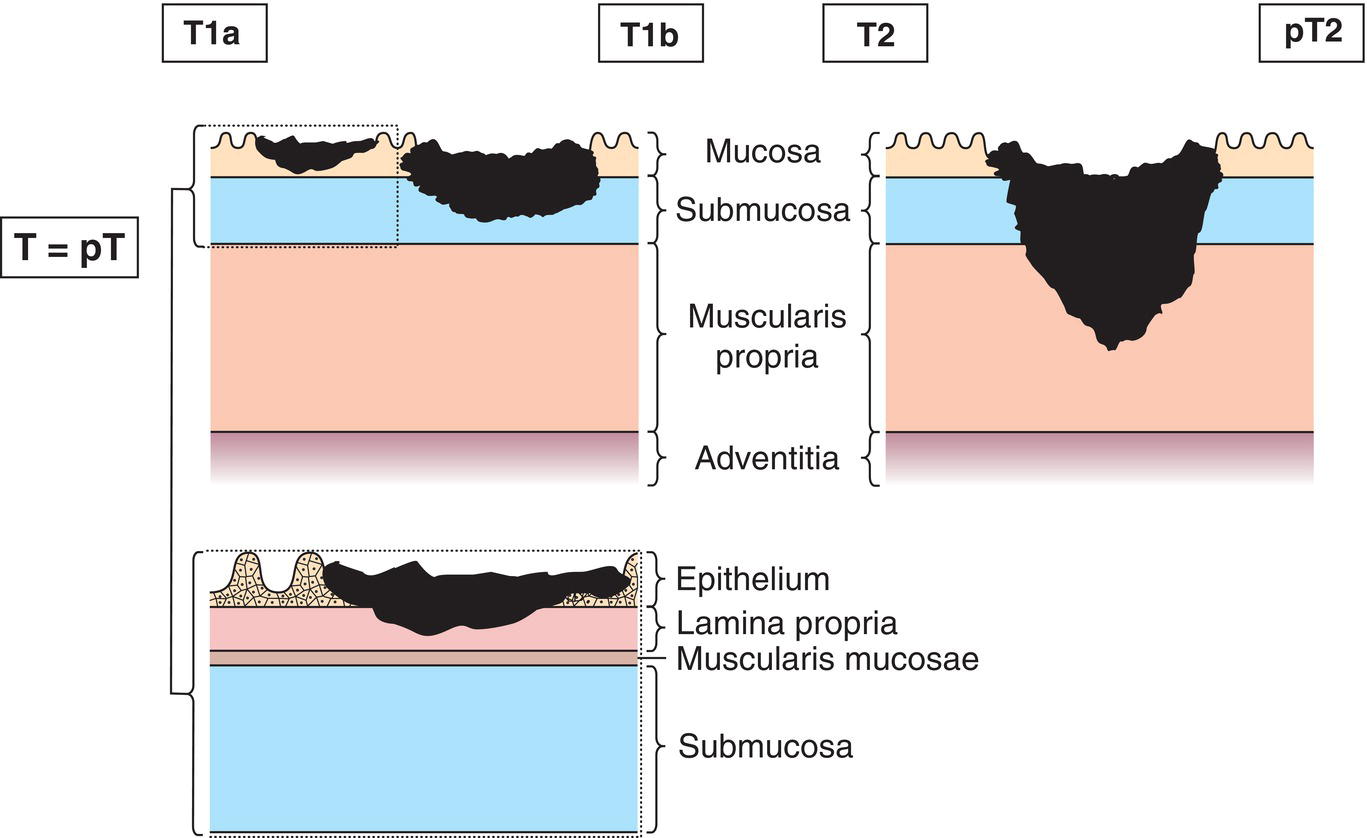
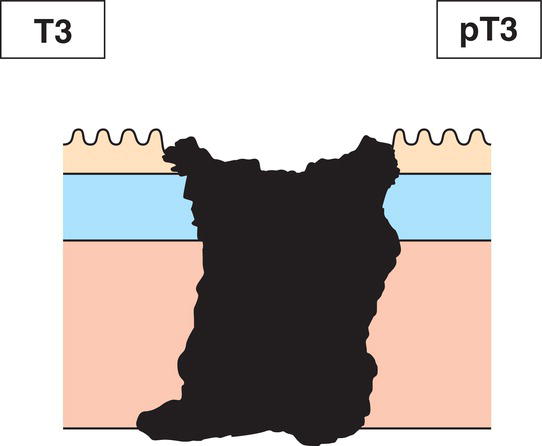
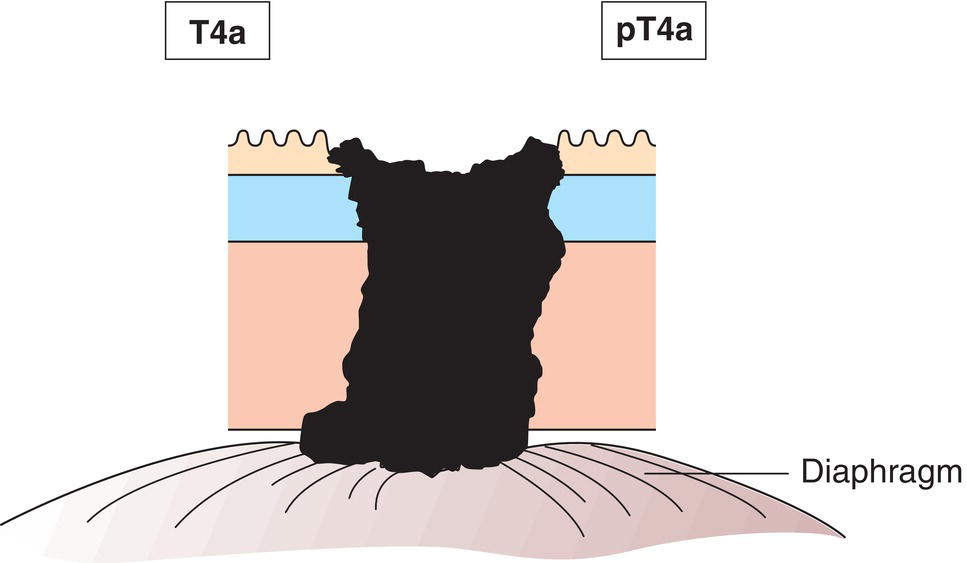
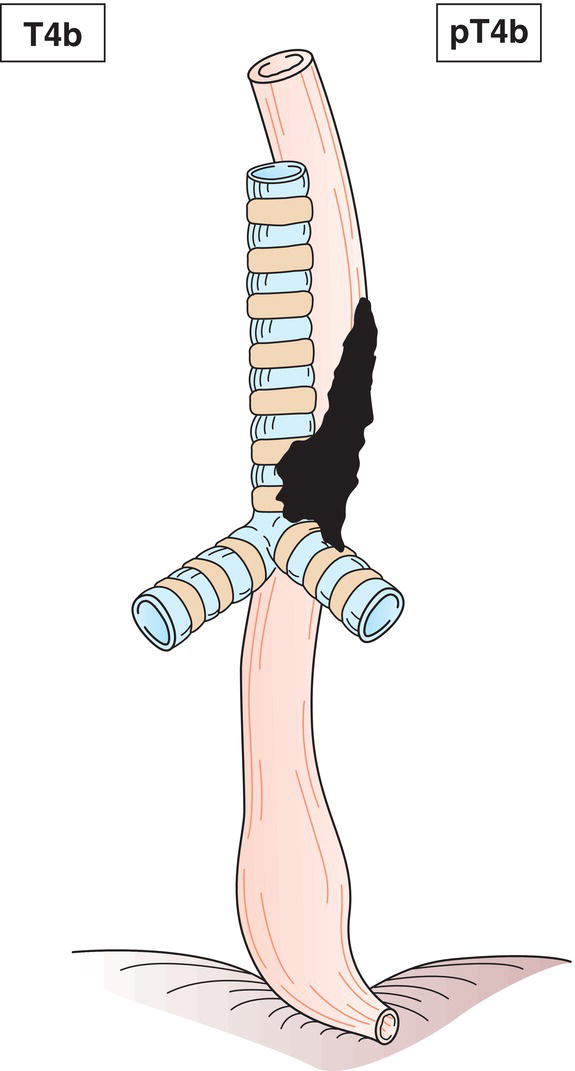
N – Regional Lymph Nodes
NX
Regional lymph nodes cannot be assessed
N0
No regional lymph node metastasis
N1
Metastasis in 1 to 2 regional lymph nodes (Fig. 138)
N2
Metastasis in 3 to 6 regional lymph nodes (Fig. 139)
N3
Metastasis in 7 or more regional lymph nodes (Fig. 140)
M – Distant Metastasis
M0
No distant metastasis
M1
Distant metastasis (Fig. 141) 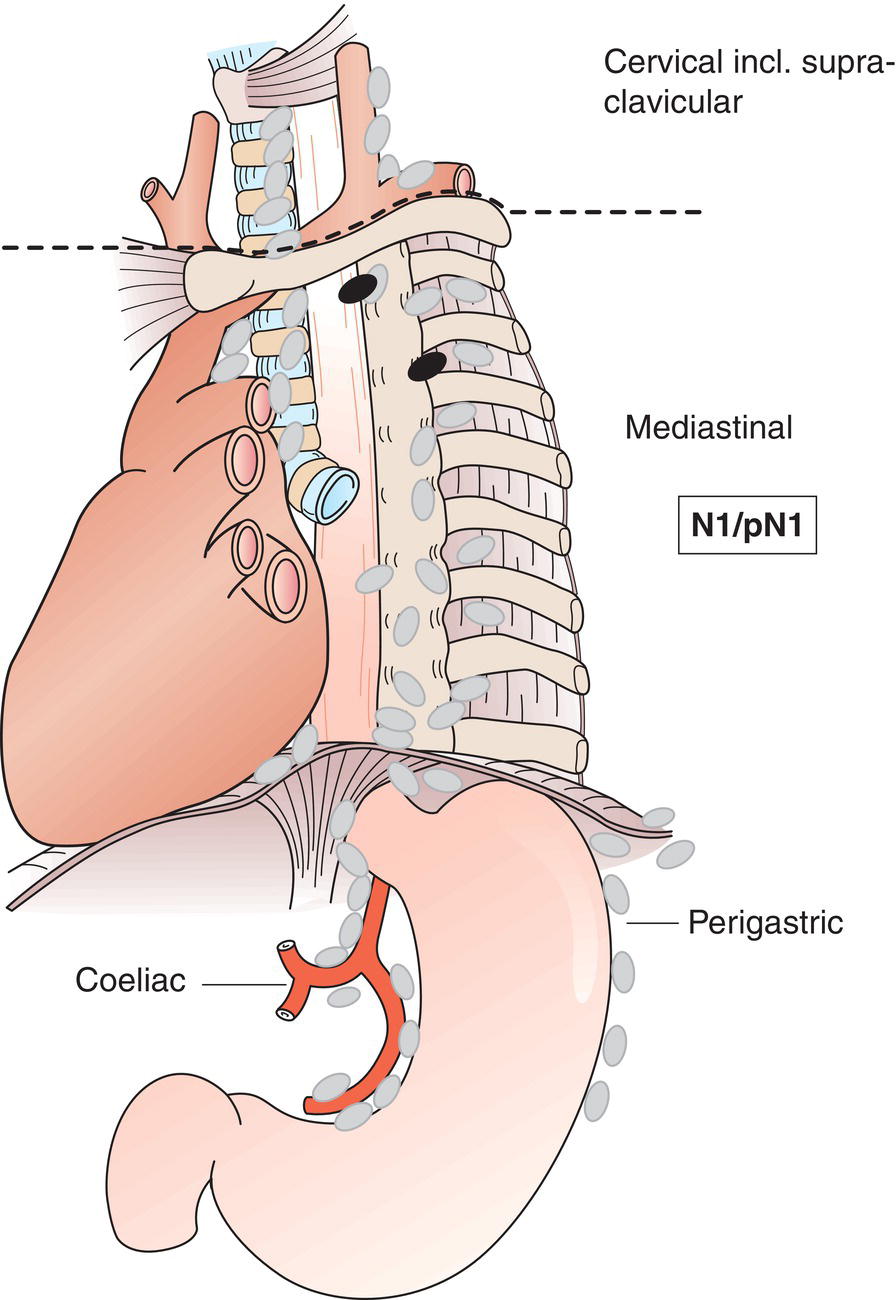
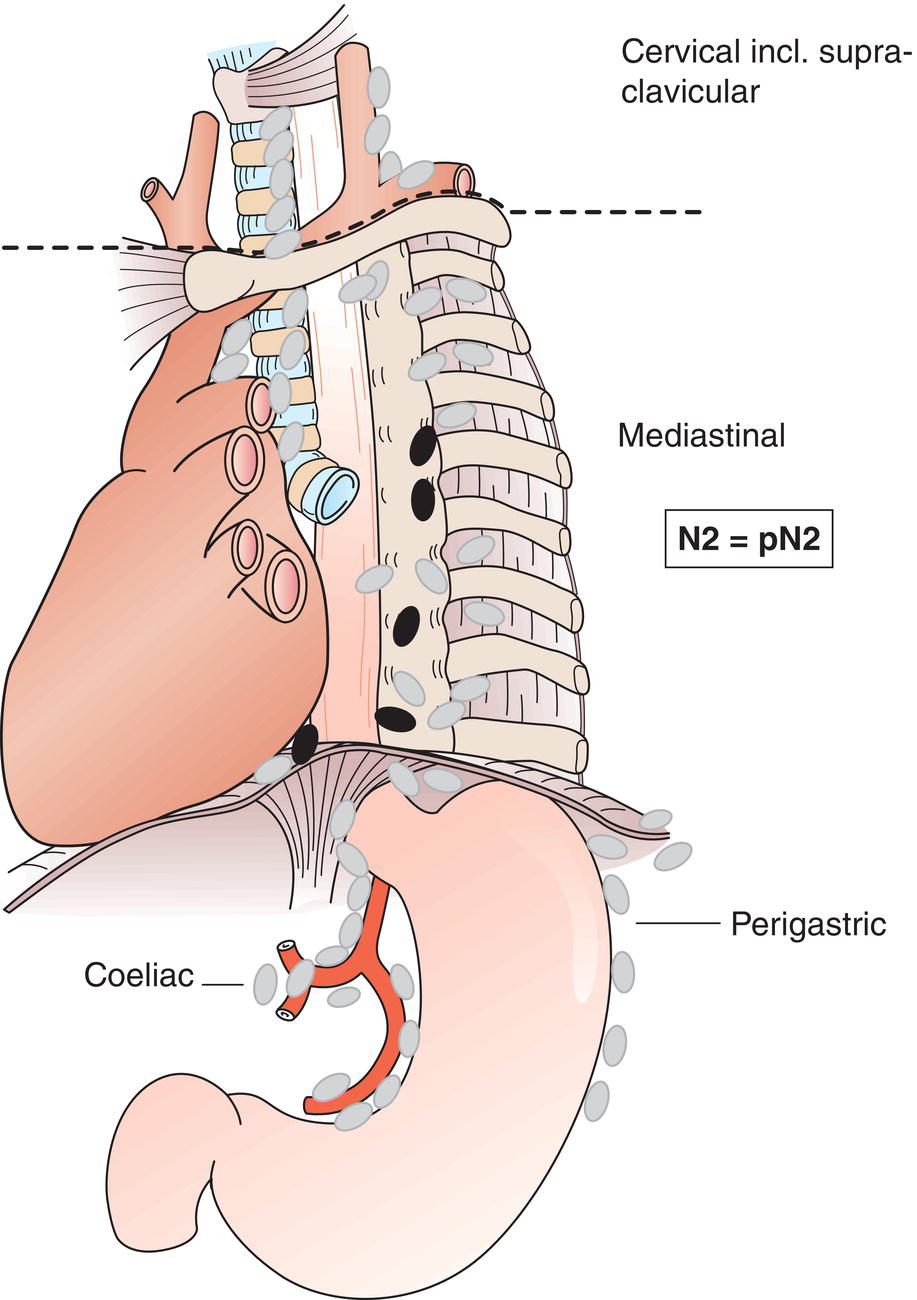
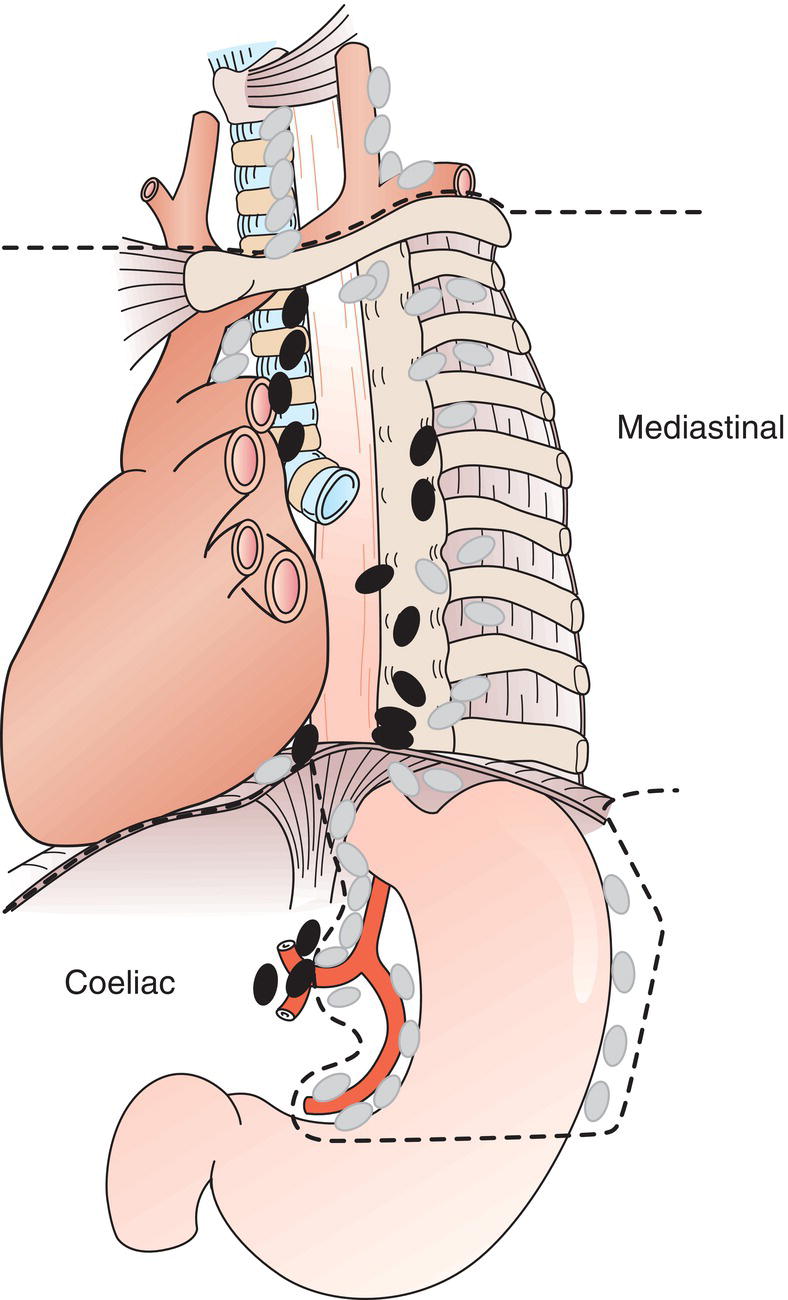
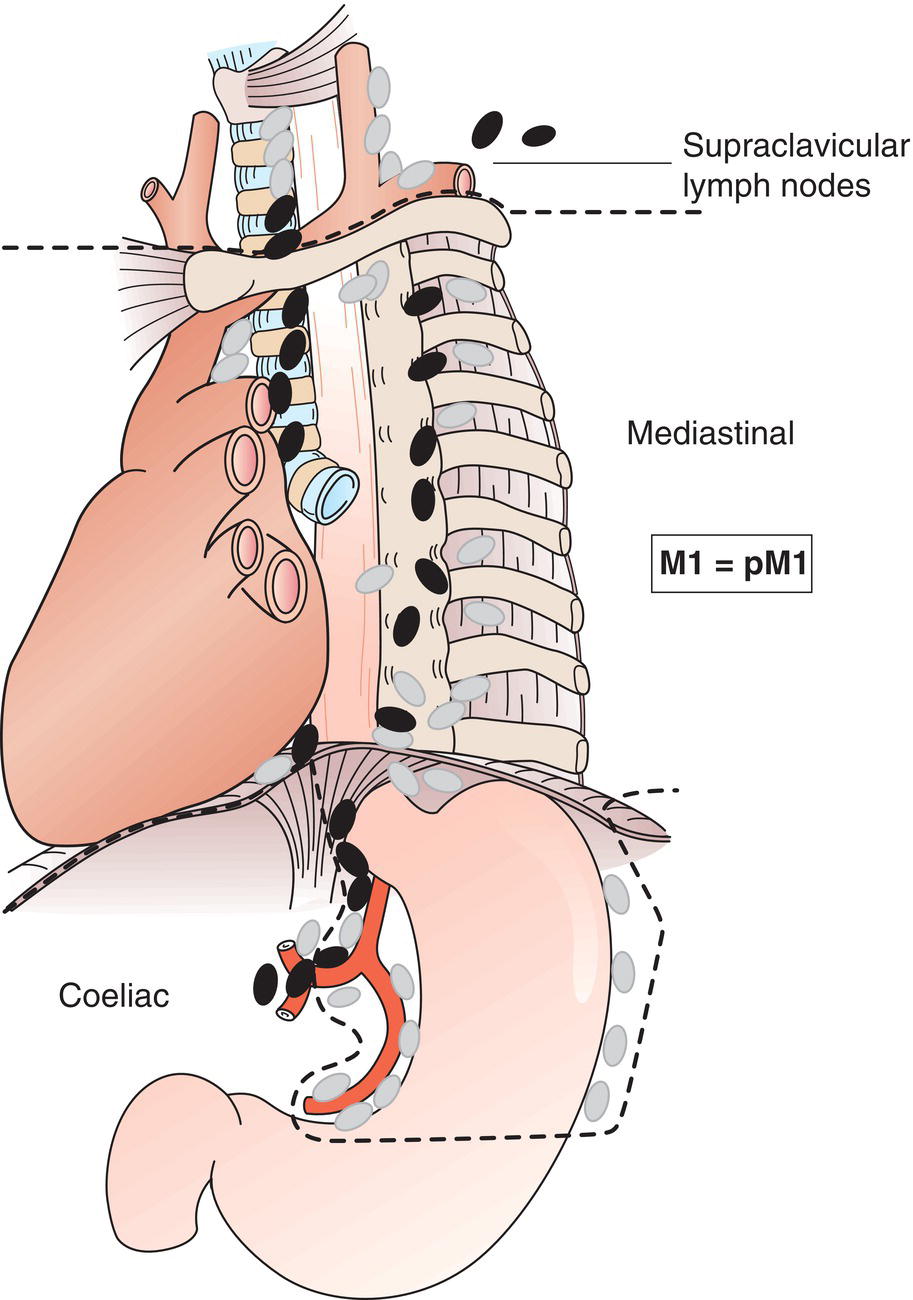
pTNM Pathological Classification
pM1
Distant metastasis microscopically confirmed
pN0
Histological examination of a regional lymphadenectomy specimen will ordinarily include 6 or more lymph nodes. If the lymph nodes are negative, but the number ordinarily examined is not met, classify as pN0.
Summary
Stay updated, free articles. Join our Telegram channel

Full access? Get Clinical Tree



